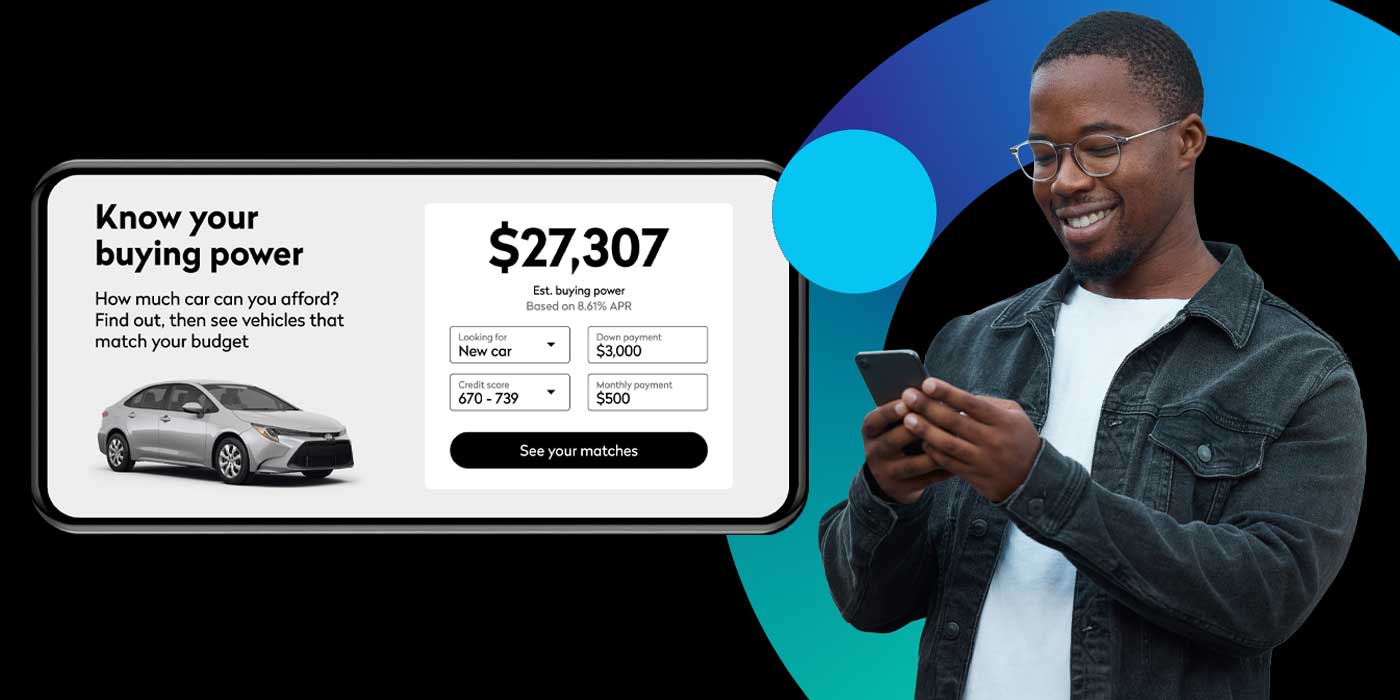How to Protect Your Profitability from Shiny Things
shiny·thing·itis
/’SHīnē THiNG ī Tis/
noun
An infection of the mind, affecting dealer principals, general managers and marketing directors. Presents with frequent changing of vendors and marketing plans, based on buzzwords and trends.
Prognosis: Declining sales and service market share, unless treated.
Treatment: A swift kick in the … wait, no, that’s not right …
Joking aside, “shiny-thing-itis” is plenty real, and almost every dealership suffers from it to some degree. The cause is understandable enough; you listen to your peers and respond to impressive vendor promises while following industry trends that you hear about at tradeshows and in your 20 Groups. The problem is that picking up the latest shiny thing rarely translates to substance or repeatable results.

Let’s explore some examples of shiny things and buzzwords. We’ll uncover the problems with constantly changing your marketing objectives and methods, then dive into how to craft a complete and thoughtful marketing plan that will carry you through 2022 and beyond.
In the Thick of Thin Things
In automotive, we’re constantly inundated with ads and recommendations for the latest products. Everything is supposed to give you an edge in marketing, and it all seems important — urgent, even! Some of what you’re seeing really is a good idea, while a lot of it is utter garbage that’s going to eat up your marketing budget. How do you tell the difference?
TikTok, Automotive Inventory Ads (AIA) on Facebook, inventory on your Google Business Profile (GBP), YouTube videos … these are some examples of good marketing avenues, which should be the very last things you’re focused on as a dealer. Chances are, at least one of those four items has been top of mind recently, and it’s a safe bet that it shouldn’t be. You only have so much time at your store to focus on marketing activities and vendor management, and these are not the best use of that time (or the check you cut for someone else’s time).
Shiny Thing #1 (TikTok)
Whether you’re in a Clubhouse group, saw it mentioned here in AutoSuccess or heard it from the enthusiastic, hands-on operator in your 20 Group, you’ve probably considered getting on TikTok. Have you considered why, though? What’s your marketing objective? If your objective is immediate sales opportunities, move on, because TikTok is best for branding. “Okay, so you’re saying TikTok is good for branding?” Not so much. Again, you have limited time and resources, so you need to be considering where your time and budget is going to get you the most attention. TikTok remains a fringe social media platform, compared to mature standbys like Facebook, and contains far fewer people in your target car-buying or servicing demographic. It’s not that TikTok is bad, but you will get more branding exposure, with a more relevant audience, by spending that time and money elsewhere.
Shiny Thing #2 (Facebook AIA)
Continuing to look at this handful of examples, let’s think about AIA on Facebook. The appeal makes sense. Facebook cooked up an ad type that keeps the user inside the Facebook platform while facilitating a lead submission straight to CRM. Sounds good, right? The problem is that users who convert within Facebook are statistically less serious about setting an appointment or making a purchase. They’re tire kickers at best, and dealers who are measuring conversion quality find that they get many more good leads for their spend when they send Facebook Ad traffic to their website VDPs. AIA ads aren’t bad in a vacuum, but they’re a shiny, trendy ad format that is actually inferior to more standard traffic-driving ads in the same space. Like many things in automotive marketing, their popularity is born out of a vendor’s bottom line. A vendor is more likely to “wow” dealers with a low cost per lead while glossing over the quality of those leads.
Shiny Thing #3 (Cars For Sale on GBP)
“So, let me guess, you’re about to tell me that inventory on my Google Business Profile is bad?!” Nope, inventory on your GBP (called Cars For Sale) is definitely something you should have. Just don’t expect anything from it and don’t pay money for it. The Cars For Sale feature was all the rage in 2021 when it debuted, and the hype has continued into 2022. More and more vendors (including us) are offering it, yet no one seems to be talking about whether it does anything. The assumption is that displaying your inventory on your listing must mean people will click on it. But have you considered why you assume that? Consumers want detailed information about the cars they’re considering, and they’re used to getting that information on dealer VDPs or third-party sites, not right on GBP. The data doesn’t lie, and data is what you should be using to make your marketing plans. Dealers with Cars For Sale activated see just 0.2% of their GBP traffic come from that feature, leading to a traffic volume so low that it generates virtually zero conversions. Having the feature does no harm, but don’t pay a vendor to get it, or make a vendor hiring decision based on it.
Shiny Thing #4 (YouTube Creation)
Before we get into what you should be doing better, let’s explore the last of the examples: YouTube videos. Some of the biggest dealers in the country are using YouTube with great success. They’re generating hundreds of thousands of views monthly, leading to national awareness, which trickles down to local business increases. Those dealers are taking an all-in approach to creating interesting videos with high production value and no mind to near-term leads and sales. On their channels, you won’t find any quick and dirty walkarounds or an ambitious salesman closing each video with “Just come on in and ask for Vinny the Car Guy, and don’t forget to tell your friends!” They’re not going to tell their friends or share your video, for that matter. Shares and engagements are reserved for content that is rich and delivers value that the consumer won’t find on the OEM site or even high-production channels like Car and Driver or Motor Trend. This is an example of a high-value marketing avenue that requires dedicated, expert staff members and years of building to create. If you have the vision and the patience, go for it! If you’re trying to do video marketing with three-minute walkarounds, your time or your payroll dollars should absolutely be spent elsewhere.
The unfortunate truth is that more time went into writing the preceding paragraphs than most dealers spend planning or researching their marketing. That’s how vendors get away with selling dealers shiny things, and the list here was far from exhaustive. Count the number of booths at NADA that advertise an artifical intelligence (AI) solution of some kind. Not even Google has real AI, so any automotive vendor making that claim is full of it.
Planning for Success
The first step to curing your “shiny-thing-itis” is to develop a treatment plan, otherwise known as a marketing plan, and it starts with deciding what you want to accomplish. Are you focused on branding and awareness? That’s likely a good play while inventory is a challenge and can keep you top of mind when sidelined consumers are ready to buy again. Are you trying to drive leads and CPROs today? That’s also a good play since you can turn your inventory faster, increasing profitability, and people always need service. Maybe you’re focusing on growing visibility against your competition, knowing it’ll pay off now and even more as inventory improves. The truth is that you probably want to be doing all this at once — but you need to match each objective to the right marketing method and be careful to avoid the shiny things.
You don’t need a degree in marketing to figure a lot of this out or to set yourself on the path to holding it accountable. Tell your team or your vendors what you’re trying to accomplish with your marketing and ask them how each marketing method measures up. The answers should make common sense. If you tell your paid search vendor that you want conversations (leads and service appointments) and they start talking about cost per click and impression share, you have a disconnect. On the other hand, if you tell them you want conversions and they explain conversion optimization and cost per lead, you’re on the right track.
What to Measure
Another common trap with shiny things is using the wrong metrics or objectives to measure success. You’ve probably heard that VDPs (or VDP views) are really important in digital marketing. This has been repeated for so long in our industry that many accept it as fact and think their vendor did a great job when they show a report touting 3,000 VDPs for the month. What if the marketing you’re paying that vendor for only drives traffic straight to VDPs? This is the case with dynamic paid search and Facebook ads. That means if that vendor drove 3,000 visits to your site, they’re going to report a 100% success rate, based on measuring a VDP as a success. But, did those VDP visits turn into leads or appointments? Hmm …
Challenge your vendors more and ask them to justify what their conversions are and how they lead to cars sold and serviced. VDPs are not the objective. Form submissions, chats, click-to-calls, completed trade valuations, etc. — these are real conversions, which put leads in your CRM. On the other hand, if your goal is branding, you should be looking at impressions, reach and views while also verifying that these behaviors are coming from a relevant audience that is close enough to your store to matter. Don’t be afraid to sound dumb. You may quickly realize that a vendor or part of your marketing staff knows less than you do about measuring substance in marketing.
First Things First
The best way to avoid getting caught up with shiny things is to craft a layered marketing plan that generates results in line with your objectives. Your plan should be valid for at least 12 months, and if you aren’t prepared to commit to that, you haven’t done enough research.
The backbone should be a good, user-friendly, low-clutter website. Use it like you were an uninformed consumer and ask your friends and family to do the same. Optimize your site for easy navigation and conversion. Next, add a long-term search engine optimization (SEO) strategy from an expert agency. Wikimotive is among a few quality options for this, and the key is to look for tangible content deliverables that are unique to your store. Why SEO? Because SEO is the only way to gain permanent market share against your competitors without needing to increase spend over time. Your SEO strategy should encompass the profit centers and focuses that matter to your store, while your website should be configured to measure real conversions, so you know what’s working.
After a good website and a real SEO strategy, it’s time to add in marketing that will generate more conversions today, along with additional brand exposure. Paid search (SEM/PPC) can help you increase sales and service traffic to your site, but be careful to measure conversions and avoid overlap with your SEO results. We offer free SEO and SEM audits for any dealer, and on average, we uncover $4,000/month in paid search waste. Yikes!
Facebook is a great platform for both branding and immediate conversions. Dynamic inventory ads, done right, will generate sales leads for under $10 per lead, while a well-crafted Facebook page strategy can engage thousands of people monthly. As you add marketing mediums to your master plan, continue to measure them against each other and only through the lens of their specific objective (branding, conversions, etc.). Say you’re doing branding on Facebook, and getting impressions for $5 CPM, then someone in your 20 Group says they’re doing great on TikTok. Feel free to try TikTok — but measure it! If your CPM is $20, take that money and reinvest it in Facebook until you start seeing diminishing returns.
Once you have a complete, performant marketing plan, which is matched to your goals and converting as expected, you can start playing with shiny things. Try them one at a time. Each time you test a new marketing method, measure it carefully and adjust. The most successful dealers didn’t become successful by sitting around doing the same thing as everyone else, but they also didn’t get there by following trends and shiny things either. They test and measure and are consistent in their objectives and long-term marketing initiatives.
Easier Than You Think
Believe it or not, planning and measuring an effective marketing solution is not rocket science. The execution often needs to be performed by qualified experts but separating the substance from the shiny things is as simple as asking good questions.
Ask your marketers whether they’re delivering branding or conversions. Ask them what they track to show that it’s working. Ask them how their answer translates to leads or service appointments. Their answer shouldn’t be a lot of “ums” and a bunch of backpedaling. If you’re suspicious, press harder.
Sold on the concept, but still a bit lost? Reach out to us. Wikimotive has always believed in excellence and an abundance mentality. We offer free SEO and SEM audits with no obligation to even take a product demo from us. The average audit includes hours of research, and the audit call can cover much more than search. We do this because we want to see dealers armed with the best information to make informed decisions that serve their bottom line, not the vendors.
Good solutions should be fairly self-evident. The people behind them don’t need to hide behind tricks and will even tell you when parts of what they do are filler to satisfy the under-informed. Seek out solutions of substance, and join the handful of ambitious, excellent dealers who have become market dominant on purpose, rather than wasting time on shiny things and trends.














